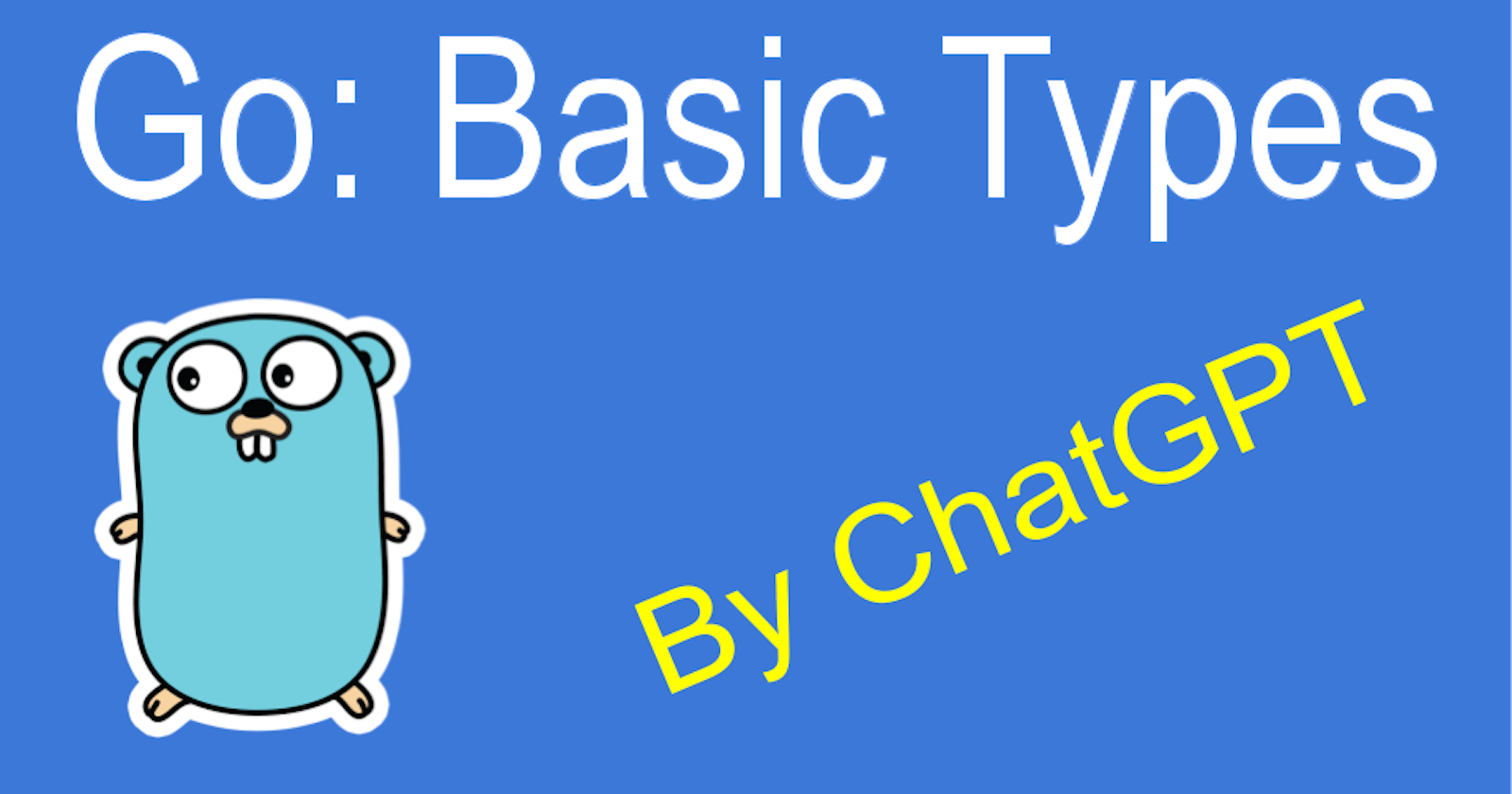In Go, every value has a type, which is a fundamental concept in the Go type system. Go's type system is designed to be expressive, efficient, and safe, while also being easy to understand and use for programmers.
There are two categories of types in Go: basic types and composite types. Basic types are the building blocks of Go's type system and are not composed of other types. Composite types, on the other hand, are composed of one or more types, such as arrays, slices, maps, structs, and interfaces.
Basic types
Here is a table that summarizes the basic types in Go:
| Type | Description |
| bool | represents a boolean value of true or false |
| byte | alias for uint8 |
| rune | represents a Unicode code point, alias for int32 |
| int | represents a signed integer, either 32 or 64 bits depending on the platform |
| uint | represents an unsigned integer, either 32 or 64 bits depending on the platform |
| float32 | represents a single-precision floating-point number |
| float64 | represents a double-precision floating-point number |
| complex64 | represents a complex number with float32 real and imaginary parts |
| complex128 | represents a complex number with float64 real and imaginary parts |
| string | represents a sequence of characters |
Note:
Overall, Go's data type model is designed to be minimalistic yet complete, allowing programmers to express their ideas in a concise and efficient manner without compromising safety or correctness.
Go vs Python
Both Go and Python are popular programming languages and have different data types.
Advantages:
Advantages of Go data types over dynamic data types used in Python:
Type safety: Go is a statically typed language, which means that data types are checked at compile time. This makes it easier to catch type errors before the program is run, which can help prevent bugs and improve code quality. Python is a dynamically typed language, which means that data types are checked at runtime. This can lead to unexpected errors and make it harder to debug code.
Performance: Go is a compiled language that can be faster than Python, which is an interpreted language. Since Go has strict typing and more efficient built-in data types, it can help optimize performance for large-scale systems.
Memory management: Go uses pointers, which can help optimize performance and reduce memory usage. Python relies on garbage collection to manage memory, which can lead to performance issues and consume more memory.
Disadvantages:
Disadvantages of Go data types compared to dynamic data types used in Python:
Code verbosity: Go can be more verbose than Python due to its strict typing and the need to define variables and data types explicitly. This can increase code complexity and make it harder to read, write and maintain.
Limitations on data manipulation: Go has fewer built-in data types than Python, which can limit its capability in data manipulation or when working with databases.
Learning curve: Go has a steeper learning curve compared to Python due to its strict syntax, lack of robust scientific libraries, and a fewer number of comprehensive resources as compared to Python.
Summary:
In summary, Go data types have some advantages over dynamic data types used in Python including type safety, performance, and memory managementbut also come with some disadvantages such as code verbosity, limitations on data manipulation, and a steeper learning curve. It ultimately depends on the needs of your specific project and your experience with each language.
Disclain: If you find errors, please comment and contribute. AI is not perfect. This article is created with ChatGPT. Thank you for reading and learning Go.🙏🏼

